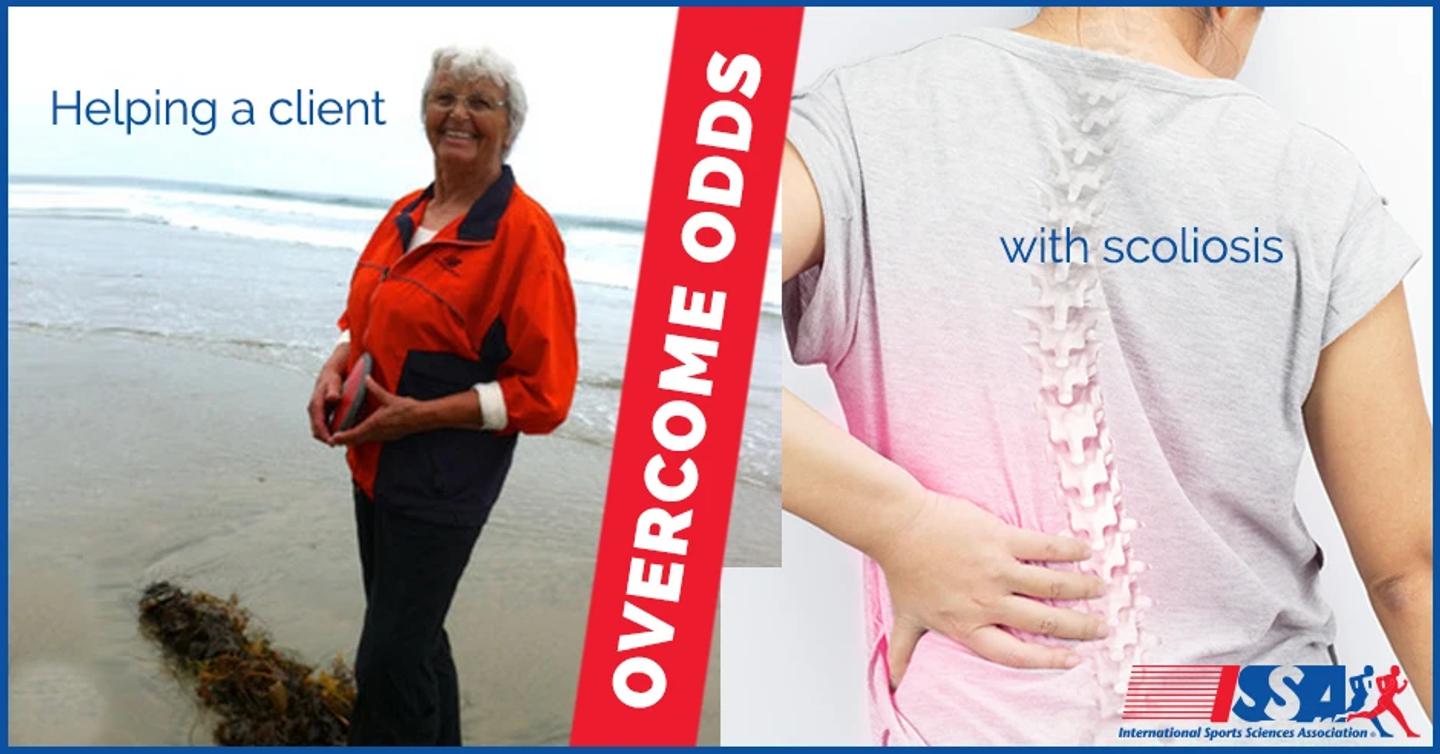
How an Olympian helped a college student overcome tough odds
Reading Time: 3 minutes 25 seconds
BY: Olga Fikotova Connolly
DATE: 2018-02-13
What needs to be accomplished in health and fitness depends on teaching one another and learning from one another in a race for the prize of exchanging pessimism with optimism.
I will never forget the afternoon when a student named "Kathy" with a visible scoliosis curve asked me to help her. Her previous experience of wearing a brace proved unsuccessful and subsequent surgery recommendations frightened her. She believed that anything was possible in America so she sought out another way.
She believed that anything was possible in America and that there may be another way.
A friend encouraged her to consult with the Fitness & Wellness program at Irvine's Campus Recreation Center. Our first conversation revealed that Kathy had not exercised since elementary school.
Her pursuit of a dream of earning a degree at a major U.S. university pinned her down to a desk, books, and computer-limited lifestyle.
Kathy was of a subtle built and a healthy individual. The possibility emerged that her scoliosis was acquired or worsened by muscular dysfunctionality.
Could that be changed? It was not for me to decide.
We found a doctor of chiropractic who specialized in spinal matters. After an examination, he said that given her age (21), there was little hope that 40-degree scoliosis could be repaired. Nevertheless, he agreed to team up with us in the effort to try.
The challenge lay not only in how to exercise and manipulate Kathy's spine but also to help her create a lifestyle that would improve her body condition and help her tackle business courses written and spoken in a language she had not yet fully mastered.
It was a challenge in which the victory had to be fully her own.
A three-dimensional study of Kathy's bone structure was not within financial reach. Standard X-rays gave us very valuable, but limited guidance. Therefore, the best road map came from calisthenics.
Observation of her multi-plane and multi-directional positions in calisthenics showed contractions and weaknesses, natural and compensatory movements. Also, Kathy's ease of replicating my moves, or some of dance photographs, revealed that she had excellent neuromuscular coordination. Her gait appeared light and balanced even though one foot had disfigured toes. Simplicity and elegance of her clothing, smartly concealing the tilted neck, shoulders and hips showed a sense of aesthetics.
So I decided that the vehicle for successful workouts had to move on the wheels of her scholarly mind, self-discipline, sense of aesthetics, and humor.
We worked out in a mirrored studio where she viewed and felt her movements the way dancers practice. We began with mimicking the child development postures described in The Endless Web: Fascial Anatomy and Physical Reality, written by R. Louis Schultz, Ph.D., and Rosemary Feitis, D.O. I have seen this approach succeed before in a martial arts rehabilitative program for a man afflicted with polio.
We also created never-to-be-neglected drills by having Kathy wear on her head a folded towel as if it were a hat or a crown. We called these the "Queen of England" postures.
Within a couple of months, Kathy's neck repositioned. Natural alignments in compound movements were helped by audio tapes based on the work of Moshe Feldenkrais, the brilliant physicist and engineer, who developed Functional Integration, a mind-body system teaching people how to restore their own functional fitness.
Kathy's feet demanded time and patient, precise exercises, but also normalized. Her strength improved by handling her own body weight, core strengthening, and work with weighted balls.
We trained balance and agility using dance and calisthenics as well as a variety of volleyball and soccer drills.
Eventually, Kathy mastered most exercises in Peter Martin's New York City Ballet Workout Book. In less than two years Kathy fulfilled her belief in America. She returned to her homeland with a B.S. degree, nicely balanced posture and a spinal curve less than 25 degrees (a 15-degree change from when she first came to me).
Recently Kathy and I met for a workout a week before last. Her posture was very fine. She told me that her original doctors at home were surprised at, and loved her posture improvement! So, she will see to our partner chiropractor as soon as she can, for a 3-year follow-up X-ray.
Training Kathy and seeing her success reinforces the need for physical education to be a requirement in K-12 education like other academic subjects. Presently, health professionals express deep concerns about the rise of chronic diseases, sensory weakening, obesity, and mental stress among kids, teenagers, and young adults.
Does this not amount to the recognition that our upcoming generations are becoming functionally challenged?
Kathy believed in the possibilities of America. I also believe that, if we are to be all that what we can be, schools must recruit teams of exercise therapists and teachers of physical education and dance who will guard our national health.
Read more about Olga Fikotova Connolly at How a five-time Olympian became a personal trainer
References
The Endless Web: Fascial Anatomy and Physical Reality, written by R. Louis Schultz, Ph.D., and Rosemary Feitis, D.O, published in 1996 by the North Atlantic Books in Berkeley.